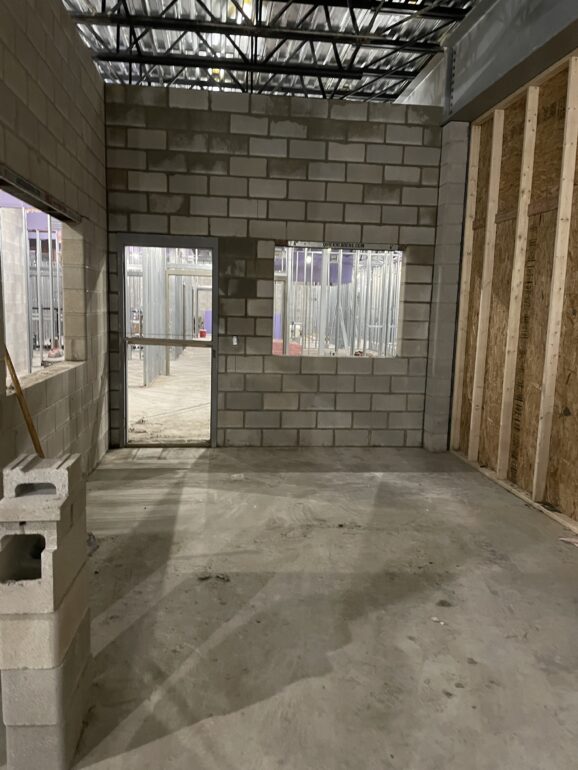Download Our Mobile App And Take WKTN With You . > > > > > > > > > > IT'S FREE!!


Buying tickets early helps support Hardin County Agriculture and Natural Resources programs
Hardin County – Farmers gather each year to see the latest in agricultural innovations at The Ohio State University’s Farm Science Review (FSR). The annual show, sponsored by Ohio State’s College of Food, Agricultural, and Environmental Sciences (CFAES), will be held Tuesday through Thursday, Sept. 19-21, at the Molly Caren Agricultural Center in London, Ohio.
Demonstrations, beginning at 12:30 daily, will showcase ag technology innovations including an autonomous tractor, drone spraying, high-clearance robotic irrigation system capable of applying animal nutrient sources to row crops, and wireless communications options for connecting these devices.
“We are beginning to see autonomy product offerings that solve challenging problems for farmers who want to stay ahead of the competition by increasing yields, better utilizing production inputs, and resolving skilled labor shortages during peak times for field operations which ultimately leads to increased profits,” said Scott Shearer, professor, and chair of the CFAES Department of Food, Agricultural and Biological Engineering (FABE).
The self-driving autonomous farm tractor is one example and performs its duties without an operator in the cab. “They are internet connected to share computational loads with a web-based interface for mission planning, provide in-field high accuracy position information, track progress, and enable remote monitoring of machine performance. Increasingly, artificial intelligence is being utilized to avoid collisions by detecting obstacles including humans, animals, other vehicles, and other obstacles, said John Fulton, professor, and Extension specialist in FABE. “Tractors without drivers are being deployed with varying levels of autonomy ranging from remote monitoring via tractor-mounted cameras to on-board artificial intelligence to carry out routine, repetitive, and labor-intensive procedures.”
Because they can record information automatically and store it in the cloud for easy access, automated tractors can also make it easier to create, keep, and transfer records of agricultural procedures. Self-driving and self-steering tractors can also significantly improve the accuracy of seeding, weeding, harvesting, and other procedures which can mean reduced use of seeds, pesticides, and other chemicals.
“There is no doubt that automation has already provided benefits to agriculture,” said Fulton, who specializes in developing technology and automated components related to application equipment to more accurately place and meet site-specific crop and soil needs. His research program also focuses on translational data analytics, developing telemetry solutions, and digital tools to improve the farm business and in-season decisions.
Shearer and Fulton have also conducted research on using drones in agriculture. The machines were initially used for non-spraying applications, such as scouting fields and collecting data on crop and field conditions. When humans scout a field, the professors explained, they typically only go to four or five locations within a field, but a drone can visit as many as 30 locations that are uniformly distributed over a field in less time.
Drones can capture important data such as soil characteristics, location of drainage tiles, crop nutrient stress level, crop emergence, or stand counts, weed species and distribution levels across fields, and detection of insects and diseases.
But the most recent advancement related to drones and farming is using drones for spraying and applying to cover crops. Although spraying with a drone is still in its infancy in the United States, interest in the technology is high. “A rapid increase of easy-to-operate drones for spraying pesticides is underway. They are lightweight, but powerful enough to lift a 8–18-gallon tank,” said Fulton. A variety of drones will be on-site at FSR to illustrate how the technology works. Regulatory requirements of drone application in agriculture, as well as current challenges of the technology will also be discussed.
With drones becoming increasingly available to farmers and with the advances in analytical tools, weed detection and eradication can be accomplished with greater speed and accuracy. Research at Ohio State is being conducted to determine spray deposition, swath control, and coverage and drift from drone sprayers in comparison to other methods used for pesticide application.
Participants at FSR will also be able to see a robotic high-clearance irrigation system that can apply liquid animal nutrient sources at the base of actively growing corn plants. The uniqueness of this system is its ability to follow planter passes regardless of the shape and size of the field. The irrigator follows and applies whatever the crop needs right at the base of the plant throughout the growing season.
“A major benefit of robotic irrigation is the ability to apply both water and nutrients when the crop is most in need of these inputs,” said Andrew Klopfenstein, a senior research engineer in FABE. “Rather than overapplying at less optimal times, nutrients can be applied more frequently in smaller amounts and when crops can readily utilize nutrients, thus reducing nutrient loss and improving nutrient use efficiency.”
Manure application through robotic irrigation systems presents several advantages over traditional land application methods—namely reduced compaction, the ability to apply to growing crops, better application control, and lower costs. Additional advantages may include increased asset utilization through extended application periods, elimination of plugging concerns, reduced odor levels, and reduced surface water contamination.
Automating routine field activities in agriculture results in better input utilization, higher yields, and farming precision, which leads to greater yields and financial returns. One of the most significant impacts seen is gains in efficiency and accuracy. Additional benefits include more timely nutrient application and better distribution, decreased fuel use, and lower labor and production costs. Visit FSR where you can see the machines in action and talk with the Ohio State specialists who are researching the best ways to use them.
Tickets for this year’s Farm Science Review can be ordered online at go.osu.edu/fsrhardin2023 or by stopping by the Hardin County OSU Extension office in Kenton. Pre-ordered tickets are $10 with $1 staying in Hardin County to support Agriculture and Natural Resources programs. All tickets at the gate are $15 day of show.
Article written by Sherrie Whaley, OSU-CFAES and edited by Mark Badertscher, OSU Extension-Hardin County.
Written by: WKTN Staff
Copyright WKTN-Home Town Media | Public File | FCC Applications | ADMIN | 112 N. Detroit Street, Kenton, OH 43326 | 419-675-2355


